A 4-Day, 3-Night Travel Guide to Quanzhou and Yongning, Fujian: A Guide to Food, Accommodation, and Travel, and Explore the Lively Life of the Ancient City
Preface
Quanzhou has the sea, the city, the quiet and secluded places, and the bustling and prosperous places.
I often like to use colors to describe a city. When it comes to Licheng, the first color that comes to my mind is orange; blue represents tranquility, comfort, and mystery, like the sea of Yongning, and if you are lucky, you may even encounter the magical sight of "blue tears"; and orange + blue is dark brown, which represents the humanities accumulated in Quanzhou, and the cultural background that has been polished by time. Quanzhou is a city where art and culture blend together, with character, history, and connotation.


【Yongning】
Yongning is destined to be a niche destination. There are no internet-famous shopping streets, no clearly defined tourist attractions, no three-star, four-star, or five-star hotels. Most roadside restaurants are locked, and buses run only every half hour, leaving the last bus gone early. Even the village lacks smooth roads, so it's easy to get lost in the winding alleys.
Yongning Ancient City | Neighboring the Gods, a Brilliant Historical Labyrinth
Yongning Town is an ancient fortress with over 600 years of history. During the Hongwu reign of the Ming Dynasty, the imperial court established the Yongning Guard here to defend against Japanese pirates. Yongning is also known for its renowned Fanzilou, a blend of Chinese and Western architecture that deserves further study.

Yongning is home to a rich collection of Fanzilou (Chinese-style buildings) in Quanzhou. Each building holds a story of its owner's journey to Southeast Asia, the War of Resistance Against Japanese Aggression, the Kuomintang-Communist confrontation, and memories of that unique era. Built in 1947 by overseas Chinese Dong Qunjing, Qunjing Building is a classic example of a Fanzilou design. While retaining a distinct Nanyang style, it features a traditional red brick facade, skillfully blending Chinese and Western influences. Ten circular columns support this two-story building, and a few pots of flowers and plants adorn its balcony, adding a touch of charm. The adjacent building is still inhabited, and the owner graciously allowed us into the courtyard for a tour.

The owner of Jiyang Fanzilou once owned He'an Tang, Yongning's largest pharmacy on Old Street. Cai Shaoyuan was both the shopkeeper and a doctor. Built in 1933, Jiyanglou features a Western-style design, with impressive geometric patterns carved into the facade and embellished with traditional Minnan-style plaster sculptures. Behind the small balcony on the second floor, a couplet reads: "Ancient artifacts bear inscriptions promoting longevity; Dongping's teachings encourage the study of knowledge." The horizontal scroll, "Keng Gou Ken Tang," conveys hope for future generations. Some of Cai Shaoyuan's descendants still practice medicine, making him a family of doctors.


Not far from Jiyang Tower is the former residence of martyr Dong Yunge, also a reinforced concrete, Western-style building. Its exterior walls are exquisitely decorated and well-preserved, with patterns of phoenixes, unicorns, longevity patterns, ancient coin patterns, and auspicious clouds clearly visible. It's probably a protected building now, and the gates are locked, preventing entry.


Among the ancient Chinese dwellings that are mostly characterized by blue bricks and blue tiles, the ancient houses in southern Fujian built with red bricks and stones are unique.

These dilapidated old buildings have not been subject to much human intervention and have been preserved, leaving behind a testimony and heritage of the cultural accumulation in the course of history.


What's particularly striking is the four-character plaque above the lintel of each house, and each one is unique. Yongning's culture is hidden in these details, demanding careful discovery and exploration. "Lan Gui Ji Mei," "Yu Sun Chuan Fang," "Rong Yang Yan Pai," "Qing He Yan Pai"... I initially thought these were just like the Spring Festival couplets we hang, expressing aspirations. But after searching on Baidu, I discovered that these characters are engraved with centuries of family memories that flow through our bloodlines. Over 600 years ago, the Ming Dynasty established the First Southeast Guard in Yongning. Soldiers from across the Central Plains brought with them a variety of surnames. These four characters on the door plaques not only indicate your origin, but also your surname.

The sprawling villages of southern Fujian, based on geographical and blood ties, often have a certain familial nature, which fosters their stable development. However, even within the same village, members of the same surname may have different branches. For example, the Cai family in southern Fujian has branches from Jiyang, Puyang, and Qingyang. In a sense, the people and language of Fujian preserve the most ancient Han Chinese genes and language. It's like a secret code shared by descendants of the same surname; once matched, they are considered family members—a truly romantic feat.


Many coastal cities use stone to build their houses, known locally as stone houses. Fujian's coastal areas are susceptible to tropical storms, and ordinary building materials are unable to withstand the harsh weather and humid environment. Therefore, locals resort to local materials, cutting hard and inexpensive rock into square blocks and stacking them to form the main structure of their houses. Furthermore, their windows are decorated with stone pillars, resembling railings, perhaps to deter theft or for some other reason.

The City God Temple is the largest temple in Yongning Town, and is dedicated to the town's patron saint. There's a large square in front of the temple, where children play ball, chase each other, and play, while elderly people drink tea under the trees to enjoy the cool breeze. As expected, the City God's blessing brings peace and tranquility to the area.

Yongning is known as "China's ancient town with the highest concentration of temples." It's truly impressive! Every few steps, you'll encounter a temple or ancestral hall—Tudigong, ancestral halls, family temples...it's dizzying. Some temples even display donation lists and amounts at the entrance. Fujianese working away from home earn money, then returning home to build houses and offer sacrifices to the gods!


The temples were exquisitely constructed, using brightly colored porcelain cut into tiny pieces and then carved into figures, flowers, animals, or landscapes. The vibrant colors of the flowers and willows almost overflowed the screen, a truly beautiful sight. Carved beams and painted buildings, auspicious images of dragons and phoenixes, symbols of good fortune, wealth, longevity, and happiness, and even the Eight Immortals crossing the sea, layer upon layer.


This is the ancestral temple next to the guesthouse where we stayed. It was still lit up at night. It was beautiful and mysterious enough (a bit scary because it looked eerie).

Yongning Old Street | A Town Forgotten by Time
Why do I love visiting the wet market? Perhaps as a traveler, no matter how harsh or noisy the local market may be, it always feels a layer of distance from you. As an outsider, this unique feeling of being in the everyday, yet not part of your daily life, always brings a sense of peace, beauty, and freshness to the journey.

For centuries, the "Old Street" served as the central axis of the Acropolis. Yongning, leveraging its port status to develop trade and shipping, enjoyed a period of prosperity and prosperity. Back then, Old Street was lined with numerous businesses, and the three trading houses of Yongjin, Xiayuan, and Xingyuan were as wealthy as a nation. Yongjin's trading company, Xiayuan's pawnshop, and Xingyuan's oil presses and mills, along with their respective fleets, spanned north and south, offering a glimpse into Yongning's former splendor. While the Old Street today lacks its former thriving charm, it remains a bustling commercial district, offering a wide variety of snacks, shops, and markets.

Old buildings are the soul of a city, providing shelter and a home for countless families. Many ancient towns have been transformed into unrecognizable imitations of antique shopping streets, leaving the once quaint streets suffused with the smell of stinky tofu, a loss of their original flavor. But Yongning is different! Here, you'll find the simple and authentic "old-fashioned flavor." With its pristine southern Fujian architecture and few tourists, it's a truly secluded place. I truly hope this hidden gem of a town will continue to preserve its authenticity.

The bougainvillea in the town is also blooming beautifully!

Yongning has a rich nightlife. People take a walk in the evening to enjoy the cool air, listen to operas and sing. It is so relaxing.
Yongning is like a historical maze and a treasure trove of buildings. I was dazzled and lost my way, missing many interesting buildings and stories. I will have to save them for another visit.
Merlin Bay | Waves, lighthouse, and watching the sun set
This hidden gem is a must-see! It's almost deserted, so you can walk to the lighthouse on the sea and watch the stunning sunset. If you're lucky, you might even see the magical "blue tears"! Search for "Anlan Palace" on the navigation system and follow the directions to the red lighthouse.


The red lighthouse standing on the blue sea is particularly beautiful.

Although the embankment doesn't look long, it's quite tiring to walk along. We finally reached the end, then turned three times before reaching the lighthouse. And the wind was so strong the whole way! In the evening, local elderly men were strolling along the embankment. They walked so fast, and when they reached the lighthouse, they stretched and clapped their hands before turning back. The elderly man even said, "I just saw you on the road, how did you get here so soon?" My friend and I couldn't help but sigh, "We are such good tourists!"


You cannot walk up to the lighthouse. There are rocks between the lighthouse and the end of the road, and climbing up is quite dangerous. It is recommended that you do not try it lightly. Safety first!


The levee is surrounded by seawater and cruise ships on both sides, with only a path in the middle stretching out into the distance, giving the impression of being on a journey to the mountains and the sea. The weather is clear, with flocks of birds flying overhead, fishing boats moored or sailing, residents fishing on the levee, and myself chasing the sunset.

We walked along the beach. There were almost no pedestrians on the street in the afternoon. Occasionally, a fisherman would ride a motorcycle past us...



The sun at the seaside is also scorching, but it is precisely because of this light that the sea surface is dotted with stars, which makes people unable to open their eyes and can't help looking at the light.


The closer you get to the beach, the stronger the smell of the sea becomes... There must be a morning market here this morning, with baskets and baskets of seafood! Honestly, the garbage sorting here is very good, with a special category for seafood!

The sky gradually darkened, and we continued walking along the beach, looking forward to encountering a delightful sunset.

We met a friend who had just returned from sea fishing at the beach. He needed to climb onto the float by himself, then pull the rope to the embankment, and then carry his sea fishing equipment and trophies and climb up the embankment through the ladder next to him. We stood quietly by and watched the whole process. His movements were as fierce as a tiger, and we really couldn't have done it without practice.


The fisherman also rowed home from afar with her bucket.

There are also dilapidated fishing boats and residents repairing them. The more I see this kind of normal life, the more real and down-to-earth it feels to me. When I turn off the filter of life, I can see life as it is. Only then do I realize that ordinary life is bitter and difficult, and finding joy in suffering is the normal life.


Meilin Bay has the most beautiful sunset in Yongning. Every time the sun sets, the fishermen working and the setting sun form the most beautiful picture of Yongning.
Guanyin Mountain | Calm in the most turbulent sea
After visiting the old buildings in Yongning Ancient Town and trying various snacks in the old street, Congtou recommended that we go to Guanyin Mountain to watch the sunrise the next day.


Yongning is surrounded by the sea on three sides. Guanyin Mountain is both a mountain and a sea. Unlike other coastlines, Guanyin Mountain is both understated and unique. It is actually composed of a variety of jagged rocks on the seashore, adjacent to the quiet fishing village of Shadi.

Perhaps it was the changeable weather, or perhaps it was the sunlight being too bright, but the sea before my eyes seemed to be covered with a layer of mist, like a dream.



The seemingly calm sea was actually turbulent. We climbed up these jagged rocks and headed towards the waves. Be sure not to step on the wet rocks; they're super slippery! By the time we'd taken some photos in the middle of the day, the tide had already risen the way we came. We were stuck in the middle of the sea, unable to get back. The wet rocks were incredibly slippery, so we had no choice but to take off our shoes and stumble barefoot, slipping with every step as we made our way back. But the water was so cool, it was super comfortable!

The wind was strong and the waves were fierce. The waves hit the rocks layer by layer, surged up layer by layer, and then slowly receded layer by layer. Between the push and pull, the sea breeze became gentle.

There are also people who come early for sea fishing. Sea fishing is really a physical job. You have to stand there all the time and get extremely sunburned.

It was low tide in April, and fishing boats lay stranded on the mudflats, their worn-out nets scattered haphazardly by the shore. Occasionally, villagers would dig for mussels and oysters by the rocks, seemingly reaping a bountiful harvest.

There is also a Tianhou Temple in Guanyin Mountain. People from Quanzhou were born and raised in the sea, and have long been accustomed to living the most stable life in the midst of uncertainties.

Hongta Bay | Swinging under the pretext of watching the sea
The Gold Coast is a great place to take children. Most people go there for the seafood and swimming. In the summer evenings, there are many food stalls along the coast, and drinking wine under the bright moon is a truly charming experience. I think the sea and beach are still worth visiting, but I don't need to go to the paid attractions, nor the many popular restaurants. It's also a bit awkward to have an overly modern building next to such a beautiful sea.


As a resort, Shishi Golden Coast is neither big nor small. There is no transportation in the resort. I suggest navigating directly to "Hongta Bay", where you can swing on the swings and watch the sea. There are also grasslands and small forests, and there are seafood stalls in the evening.

There is a sea swing here, which is actually a sports equipment for local residents. However, it faces the sea, and it is really relaxing to swing on the swing and watch the sea.


You can bring your children to the beach to play for a whole day.


We also met a group of students who came to the beach for a picnic and they were flying kites on the beach.


Although I only had a few days in Quanzhou and didn't have time to fully immerse myself in any of the cities, I still want to remember it! I used to wonder why people loved seeing another city across the sea, but now I understand that no matter what's on the other side of the sea, it's worth seeing.
【Yongning Food】
Before we left, the hostess at the B&B, Congtou, sent me a guide to Yongning's local food scene. I followed the navigation and checked in at each restaurant, and they were all delicious! The snack shops are all run by locals, and they close up shop in the evening after selling out. Many of them only serve breakfast. Congtou recommended a noodle soup place in the market, but we were too late to try it.
Acha Ginger Duck
Address: No. 207-209 Yongmei Road, diagonally opposite the Navigation Junhao Hotel.
Average consumption per person: 60 yuan. Recommended ginger duck (whole or sold separately, or vacuum-packed to take home, highly recommended! Super delicious! Super large portion). The taste here is different from that in Quanzhou city. I think the ginger duck in Yongning is better!

Ginger duck, 65 yuan per portion. It's a truly massive portion! The two of us girls couldn't finish it! As Nanjing natives, we're quite picky about duck. As the saying goes, "No duck leaves Nanjing alive." If the duck isn't properly prepared, it'll have a strong smell, and even the slightest hint of it is enough to make me lose it. But this ginger duck is incredibly delicious, perfectly stewed to perfection, with just the right amount of ginger flavor—not too strong, not too weak. Who could resist this piping hot pot of ginger duck? I washed it down with two bowls of white rice!

The meat is so soft and tender, if you pick up the leg with chopsticks and shake it, all the meat will fall off, even the skin is delicious!

Bitter Snail Soup. Surprisingly delicious! Highly recommended! Small 15 yuan, large 45 yuan. I ordered it out of curiosity based on the name, and was pleasantly surprised! It's delicious, with a clear broth. The ginger duck can be a bit greasy after eating too much, but the Bitter Snail Soup is a great way to relieve that greasiness. Despite the name, it's not bitter at all. The snail meat is huge, and it's coated in meat. It's actually a snail meatball soup.


Oyster omelet, 30 yuan per portion. It's a huge portion too! It's delicious with the dipping sauce, and there are so many oysters! Seafood is definitely cheaper at the beach!

Aqua Dumplings
Address: Yongning Market. Yongning is small, with only one proper market next to the only commercial street. Most snacks are within a five-minute walk. If you're in Fujian, you absolutely must try the flatbreads. Akua flatbreads are thin-skinned and filling, and you can even add instant noodles to them.


I've always believed that the real local snacks are hidden in the corners of the food market. While eating, I can even chat with the local guy sitting next to me. He said that he had been traveling somewhere else and wanted to eat flatbread. As a result, when he ordered a flatbread, the person who ordered it didn't know what it was and asked if it wasn't called flatbread in Nanjing.


I thought dumplings and instant noodles would be greasy, but it turned out to be quite refreshing.

The price is also very cheap.

Guohua Beef Snacks
Address: No. 4, Yongning Street, diagonally opposite Xibao Building. Just looking at the sign, I felt that this place must be delicious, and it looks very old.

Beef noodles are 15 yuan a bowl. Absolutely delicious! Highly recommended! You absolutely must try it! The beef is so smooth and tender, and the broth is like satay or peanut butter, but not dry at all and very fragrant.

Beef soup. The inside is very similar to fried crispy pork, smooth and delicious, with shredded ginger in it. Recommended!

There are also beef tripe and other things that can be added, which look so tempting. Fujianese people really know how to eat. I feel like I have never heard of many parts of the cow.

Changxing Seafood Restaurant
Address: 500 meters north of Meilin Wharf. It was really hard to find this restaurant. The restaurants in Yongning are really open or not depending on the mood. This restaurant should be considered a larger seafood restaurant in the town.
Average consumption per person: 100 yuan for bamboo clams. When I ordered, the boss asked me how many I wanted. I thought it was too few, but I didn’t expect the clams to be so big.


Salt and pepper shrimp, take me away.


The store recommended a fish, I don’t know what it’s called, and it cost 75 yuan. I personally don’t think it’s very delicious and not worth it.

The shrimp cakes are 10 yuan each and taste pretty good. There is really a whole shrimp inside.

Old Street Large Intestine and Blood Shop
Address: Middle section of the old street, opposite the barber shop.
The owner of this shop is quite capricious. She only sells it at noon, so go around 11 PM to get it. Sometimes she's closed. It's located in an alley, so it's a little hard to find. You can smell the aroma from far away! This is pig blood sausage, a local favorite, but we're not quite used to it because the pig blood is quite fishy.


Yongning Accommodation
Recommend a B&B I stayed at this time: Nanmen No. 7 B&B
Miss Onion is very nice. She introduced me to local snacks and attractions. The room is also decorated with local characteristics.
Price: about 200 yuan/night


I really like Congtou’s yard, where you can sit and drink tea and chat.

There are also fruits planted in the yard. When they are ripe, Congtou will take the guests to pick and taste the fruits.

But my favorite is the rooftop terrace. When I booked Congtoujia, I aimed at the terrace. In the evening, I went to the terrace to enjoy the breeze. It was so comfortable and relaxing, and it relieved the fatigue of the day.

You can also drink tea on the terrace.


Quanzhou
"Licheng", "Zitongcheng", "Wenling", every nickname of Quanzhou sounds nice.
This city is undoubtedly one of countless deities, with every household displaying an altar for incense and offering sacrifices to the gods with exceptional reverence. Quanzhou is perhaps the gathering place of the gods. With temples every five steps and temples every ten, strolling through the streets of Quanzhou, you'll stumble upon nearly every major religion in the world without even needing to search.
Puppet Show | Young figures are the most precious treasures
Quanzhou's puppetry, a part of its intangible cultural heritage, is well worth a visit! Also known as "suspended string puppetry," Quanzhou string puppetry uses 16-30 strings to manipulate the puppets, creating a variety of complex movements. The puppets are incredibly sophisticated, performing nearly any human action, with perfectly lifelike expressions and movements.
Tips:
Address: Quanzhou Puppet Theater (No. 24 Tongzheng Lane)
Ticket price: 20 yuan, the performance lasts about 1 hour


There were four performances: "The Young Monk Descends the Mountain," "The Story of Ruolan," "Zhong Kui Gets Drunken," and "Dream of Youth." Both were subtitled, but I didn't understand a single word, probably because the singing was in Minnan dialect. The scene where the young monk descends the mountain is hilarious, and the scene where he falls during the thunderstorm is especially hilarious.


My favorite performance was "Drunken Zhong Kui," a truly award-winning performance! It was incredible! When he was half-reclining on his chair, I thought just holding the wine glass was enough, and I was just pretending to drink. But I was surprised to find that there was actually water in the wine jug!!! And the puppet's mouth actually opened! The production was truly exquisite! So much detail! Under the artist's control, the puppet seemed to come alive, so vivid. Zhong Kui could easily climb on and off the table, pick up the wine jar, and wield his sword from behind. Even after passing out drunk, he even snored with a serious air!



The youthful dream is also a unique creation! The octogenarian woman shakes her body, her wig and gown fall off, and then she changes into a middle-aged woman. Then, as the performance progresses, the puppet transforms into a young woman, dancing with such grace that she looks like a fairy. It's jaw-dropping! The puppet is so fashionable, and you can even change your outfit!

What is most touching is that the performers of these puppet shows are all young people. While many traditional operas are facing the situation of lack of successors and gradually disappearing, Quanzhou puppet shows are full of vitality.
Kaiyuan Temple | Quanzhou's business card, close to all living things
Kaiyuan Temple is the oldest Buddhist temple in Fujian, yet it's anything but stuffy. It's Quanzhou's calling card, with its two ancient stone pagodas appearing in nearly every image promoting the city. Every visitor to Quanzhou posts photos of the East and West Pagodas on their social media feeds to prove they're in the city.

The most striking aspect of Kaiyuan Temple is the twin towers. Their imposing, ancient beauty, dignified elegance, and truly captivating presence are truly captivating. Different angles and heights reveal a different view. Against the backdrop of lush greenery, they exude a sense of ease and dignity. Yet, amidst the bustling crowds, they exude a sense of tranquility and silent protection.

Looking up at the towering twin towers, one feels a sense of the immense majesty of Yanran Mountain, its solitary presence. Despite the passage of time, they remain rooted in this land like a stabilizing force, silently accompanying the passage of time. The carvings on the towers are also fascinating, especially the figures supporting the pillars at the bases, each with their own unique expressions, creating a captivating atmosphere. Compared to their Western counterparts, they possess a more endearing and simple quality.

Brahmanic towers, Hindu columns, sphinx-shaped pedestals, the wings of celestial musicians—these details, all within this thousand-year-old Buddhist temple, tell the faithful a tale from another continent. These artifacts, having weathered countless dynasties and centuries, possess an indescribable charm, not so much due to their graceful forms or the exquisite craftsmanship of their carvings, but rather the traces of time that remain on them.



This stone is very famous. When a friend pointed it out to me, she asked me to find out what it meant. I thought it meant "peace of mind," but later she said it means "sinking the mind." It's right next to the West Pagoda, but the stone is inconspicuous and you might miss it if you're not paying attention.

The roof of Kaiyuan Temple is not as straight as in northern China. Instead, it is slightly concave in the middle, with overhanging eaves at either end, creating a fluid, streamlined shape resembling a flying swallow. The decorations on the roof are even more intricate and delicate, with dragons floating above them as independent decorative elements. The colors are also brighter. Unlike northern temples, which are dominated by yellow, blue and green also predominate here.


You must go to see the Ganlu Ordination Platform, it is so beautiful.



The main hall is in typical southern Fujian style, with red bricks and yellow tiles, intricate carvings, and a double-eaved hip roof, but it is very spacious horizontally, giving people a sense of stability.

Kaiyuan Temple's central axis features the Main Hall, flanked by giant, ancient banyan trees. The long, spacious courtyard is lined with lush, robust banyan trees. Standing beneath a banyan tree, I gently feel the warm sunlight cast by the trees, illuminating my shadow. Fat pigeons stroll beneath the trees, drinking water. The birds, bathed in divine light, are truly different, not at all afraid of people.



This red wall is great for photographing. Many internet celebrities take photos here, and the photos are very good.

The Master Hongyi Memorial Hall is also inside Kaiyuan Temple.



Here is a quieter little world, where the fragrance of osmanthus wafts through the air, creeping grasses grow thickly, and greenery surrounds the place, creating an atmosphere far removed from the hustle and bustle of the world. This kind of atmosphere is quite suitable for the ultimately peaceful and quiet life of Master Hongyi, whose brilliant and legendary life was ultimately a peaceful and quiet one.

Xiapu Village | Hardworking women and idle old men
Xiepu Village is located at the mouth of the Jinjiang River, not far from the old town. A 20-minute taxi ride away, you'll be there when you smell the oyster aroma. This place is famous for its flower-wearing women. Xiepu women are one of the three major fishing women in Fujian. They all wear a bun with a "flower headband," clove earrings, and specially made long-sleeved blouses and wide-legged trousers, all with a very distinctive style.


When we first got off the bus, we were stunned. The surrounding buildings were all modern, small two-story buildings, stacked one on top of the other, all modern brick houses. It didn't look like a quaint village at all. It was centuries away from the traditional fishing village we'd imagined, nestled by the sea. We wandered around aimlessly until we saw a woman shucking oysters on the side of the road. We asked for directions, and she enthusiastically explained everything to us, but unfortunately, we didn't understand a word she said.

Only when we reached this big rock did we realize that we had really arrived!

There are leftover oyster shells everywhere, and there are signs saying "No littering of oyster shells allowed". The garbage sorting here is really good.

The women on the main street are all working. Even when they are laboring, they dress themselves up beautifully. Their black or gray hair is piled up high and decorated with bright flowers. The more flowers they put on, the more beautiful they are. The details reveal their serious attitude towards life.

It's so sad to see this old lady. She may have been doing repetitive labor all her life. Her neck is so crooked that she can't even lift it up. Yet she is still working so hard at such an old age.


Of course, not all of them are working women. They also gather together to play cards in their spare time. Maybe the daughters-in-law are peeling oysters.

I walked in and took a look. The cards they were playing were also very special. They looked like chess, with words like "帅", "象", "马" and so on written on them.

As we walked, we became puzzled: the village was full of working women, so where were all the men? Sure enough, at the corner at the end, we finally saw the men, gathered together in the sun, boasting about their lives. They seemed to be living such a comfortable life that I couldn't help but feel sorry for the local women.

Gentlemen playing chess next to the Mazu Temple.

Xiapu Village is located at the mouth of Jinjiang River, not far from the sea. If you come here in the morning, you should be able to see the bountiful harvest of fishermen returning from fishing.


Quanzhou boasts 6,000 deities, but the one most cherished by the people of Quanzhou, whose livelihoods depend on the sea, is undoubtedly Mazu. Mazu protects the hardworking Quanzhou people, allowing them to harvest food along the Maritime Silk Road and teaching them life lessons. The Mazu Temple in Xiapu Village is as impressive as the Kaiyuan Temple! We were truly astonished to see how such a beautiful and exquisite Mazu Temple could be built in a village!


The temple is resplendent with golden emeralds and vibrant colors, a testament to the meticulous care and investment of the local residents. The main hall, dedicated to Mazu, the goddess of the sea, is five bays wide and four bays deep, constructed in a gabled roof style. Dedicated to Mazu are the Great Mazu, Second Mazu, and Third Mazu, along with Guanyin. Legend has it that Shi Lang, while on the platform, once visited the temple to seek divine guidance. Behind the platform, a plaque reads, "Jinghai Qingguang." The left inscription reads, "The 24th Year of the Kangxi Reign of the Qing Dynasty." The right inscription reads, "Erected by Shi Lang, the Admiral, General Jinghai, Marquis of Jinghai. Renovated in the Gengwu Year." The current wooden plaque was erected in recent years.



There are flying fairies on the beams on all four sides, each with a different posture.


This is the first time I see floral water on the altar. Are they afraid that the mosquitoes here will disturb Mazu's meditation?

The carved beams and painted buildings are magnificent, and they all look like newly built buildings.


The construction monument of the Mazu Temple is engraved with a list of donations. What is surprising is that we saw a "female vendor dragon dance team". It is so cool to see a team of female vendors in such a relatively traditional and backward village!

The red brick houses here are beautifully built. With simple red bricks, changing their orientation can create a different texture on the wall. The turning points can be straight and sharp, or rounded and smooth.

There are also houses made of oyster shells. Locals used to use oyster shells to form the surface of the building, mixing oyster shells with mud to build houses. Today, they are still very solid and have become a landscape. The white and gray shell walls are like a gift from the ocean, with the scent of sea breeze. These weathered shells are no longer as hard to the touch and now probably only serve a decorative purpose.


Some of them have been developed into a tourist district, and some buildings have photos of celebrities visiting the area hung in front of them.



The eyes, mouth, nose and claws of the stone statue at the door were all painted with colors.


You can also experience changing clothes in the village. For 40 yuan per time, you can wear the clothes of the Xiapu women, put on the hair accessories of the Xiapu women, wear flowers, and transform yourself into a local.


Chengtian Temple | A World of Its Own
Quanzhou has so many temples, and I didn't have time to visit them all. So a friend recommended Chengtian Temple, saying it was incredibly beautiful! Chengtian Temple is the oldest and most prosperous of the three local Buddhist temples, though the main buildings were recently renovated and are magnificent. Upon entering, you'll be greeted by a massive banyan tree with a canopy of clouds, and the occasional monk will pass beneath its lush, hanging branches.

Behind the wall is a school, and the sound of reading can be heard faintly.

The air is comfortable, the garden is full of flowers, and the courtyard is spacious and bright. Chengtian Temple is indeed beautiful!


The iconic swallowtail ridge of ancient buildings in southern Fujian.


There are monks chanting in groups of three or four in the corridor. I have to say that there are really a lot of monks in Chengtian Temple.

The big banyan trees in the courtyard are 150 years old, with long beards hanging down, which is both fresh and heavy in beauty.

Compared with Guanyue Temple, Chengtian Temple is not as famous and not as popular. It is relatively quiet and has few tourists.

There are many turtles in the pond, and the smaller ones are lying on the wooden boards.


Burning incense here is free! ! Free incense is provided next to it and you can pick it up yourself.



Going further in is the place where Master Hongyi was reborn. Master Hongyi was really good at choosing a place. This place is really suitable for long-term sleep. It is quiet and beautiful, and the greenery is also very well done.



West Street | The vibrant atmosphere hidden in the streets and alleys
When I first arrived at West Street, I had a very bad impression of it. It was too commercial and not the lively atmosphere I wanted to see. I complained to my friend, "This place is so different from what I expected. How is it different from the Confucius Temple in Nanjing?" It was not until the next day that I discovered that West Street is very large. The shops for tourists start from the corner of Kaiyuan Temple. Don't enter from the commercial street, walk towards Xiaogan Lane, that is the lively West Street I want to see!



The Bell Tower is also a landmark of Quanzhou. Built in 1934, it was designed by a British-educated architect. I had expected it to be grand and majestic, but in person, it was surprisingly small. Its European style blends with traditional architectural brackets, and its pure white exterior truly reflects the local character.

At the entrance to Xiaogan Lane, there was a coal store, though it's now rare. Heading east, there's a row of fish vendors, vegetable stalls, breakfast shops, barber shops, and general stores, not to mention a few small bars. Here, the residents' daily lives haven't been completely squeezed out by commercial tourism; West Street still feels alive. This is exactly the West Street I want to see!


The alleys are wide and narrow. The wide ones can accommodate cars, while the narrow alleys have walls close to each other and only one or two people can walk side by side.

Xiangfeng Lane is also a great spot for taking photos, where you can take pictures of both the East Pagoda and the city streets.



【Quanzhou Food】
Quanzhou food is so delicious!!! I wish I had ten stomachs!!! Food from all over the world is just a bowl of worldly fireworks.
Guozai Noodle Soup
Noodle soup is to Quanzhou what hot pot noodles are to Fuzhou—a must-try. Guozai Noodle Soup is a well-known local specialty, known for its broth that's smooth, yet not mushy, and clear, yet refreshingly delicious. It's made with handmade noodles, cooked in a broth, and then thickened with starch to create a paste. While it may appear to be filled with thin noodles, the experience is completely devoid of noodles; they melt seamlessly into the broth.

Toppings include seafood, vinegar pork, duck intestines, pig blood, and large intestines. The vinegar pork is a must; it's a local specialty, and its texture resembles boiled crispy pork. Oysters and squid are optional; they might have a slightly fishy flavor, but they're incredibly fresh. Don't forget to order the fried dough sticks (youtiao), which are perfect for dipping in the rice noodle soup. It's a truly satisfying breakfast!
Tips:
Average consumption per person: about 10 yuan


We went next door and bought another serving of vegetable cake, which tasted very similar to shredded radish rice cake.


The price of noodle soup is not expensive, it mainly depends on the ingredients you choose.

Zeng's Laoji Noodle Soup
After having Guozai Noodle Soup the day before, I was hooked and craving another bowl of noodle soup for breakfast the next day. Zeng's Old Noodle Soup is next to our B&B, near the West Street Market. It's not a big hit on review boards, but the sign says it must be delicious!

The owner enthusiastically recommended it to us. He suggested adding oysters, shrimp, and quail eggs if we were comfortable with it. It was very refreshing. He also recommended squid rolls and large intestine. The owner's recommendations were indeed delicious!


We went next door to buy fried dough sticks and taro cakes. The taro cakes were so filling that we couldn’t finish them, but the taro tasted so good.


Grandma Hou's Roasted Pork Zongzi
Hou A-po's Shao Rou Zong (rice dumplings) near the bell tower is also very famous, with an average price of about 20 yuan per person.


We ordered meat dumpling soup, water ball soup, small intestine soup, five-spice rolls, and a scallop and pork rice dumpling. The soups were all very refreshing, but the rice dumpling was a bit too much for us. It had peanut butter in it, which was a bit cloying, and the filling was very thick.


Dongxing Beef Restaurant
In Quanzhou, beef is a staple at every meal. A Chinese steak, a bowl of beef soup, and a bowl of salty rice are all perfect for satisfying a hungry stomach. When it comes to Quanzhou beef, Dongxing Beef Restaurant is a standout! Having had beef noodles in Yongning, which were so delicious I couldn't forget them. So, when I returned to Quanzhou, I was eager to have another beef feast.

When we arrived at Dongxing Beef Restaurant late in the evening, it was already past dinner time, but there were still many locals there, which shows how busy it is! We ordered beef noodles, beef soup, and a steak.

The steak is well-marinated and has tendons, and it becomes more delicious the more you eat it.

The beef soup is very tender and chewy, with a little shredded ginger and green onions. The beef is so smooth that it seems to melt in your mouth.

The beef noodles are really fragrant, as if they were made with sesame paste or peanut butter, but they also become drier the more you eat them.


The prices are also very reasonable, and food in Quanzhou is really not expensive.

On the way back, I went to the supermarket and bought some local Fujian beer. Walking on the streets of Quanzhou at night, it was so comfortable to feel the breeze.

Love Agarwood
Shihuagao is a unique summer drink from southern Fujian. It's made from Shihuacao, an edible seaweed that grows on reefs in the mid-tide and low-tide zones of the Taiwan Strait.
Tips:
Average per capita consumption: about 7 yuan.

You can add various ingredients into it, such as taro, red beans, watermelon, etc.


The transparent strips are agar-agar, which comes from a whole piece and is then scraped off strips one by one, much like the way jelly is made.

Wu's Handmade Mochi
This is a famous handmade mochi shop on West Street Commercial Street. They're filled with sesame seeds and crispy crackers. They only keep for 24 hours. They say they're better served warm. I bought some and tried them, but I didn't find them very tasty. They just tasted like flour and glutinous rice. I don't know why they're so popular online.



Yafu Spring Roll Wrapper
The fillings of spring rolls include: pork belly, carrots, cabbage, tender tofu, dried bamboo shoots, oysters, squid tentacles, etc. The auxiliary ingredients include: coriander, ground peanuts, seaweed, rice vermicelli, etc. The taste of these combined... should be sprinkled with sugar, and it tastes sweet. The spring rolls are made in advance, and they should taste better if they are made now.

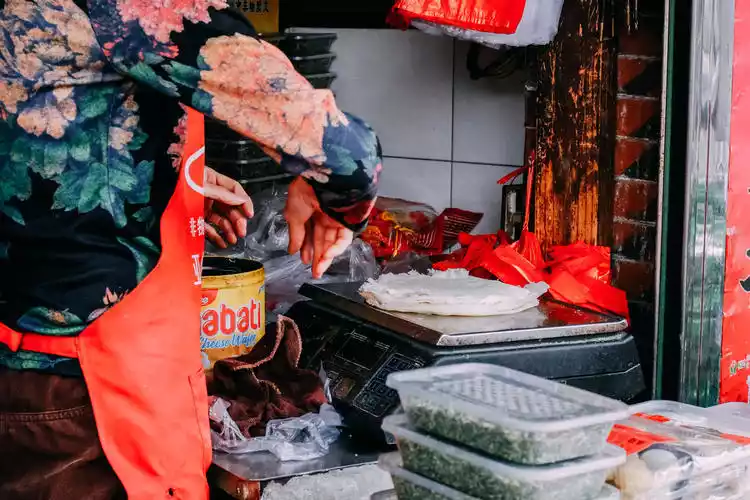
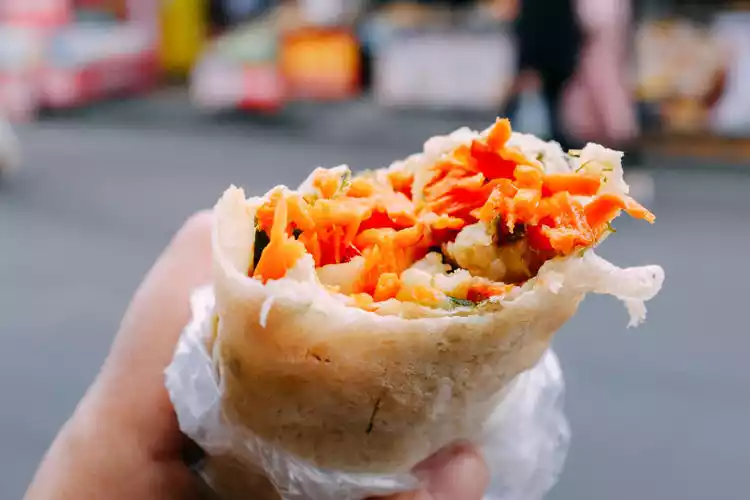
Garlic sticks (recommended as a souvenir)
Highly recommended! The garlic sticks have a strong garlic aroma. The fried dough twists are first fried through the basil, then coated with garlic paste, and finally sprinkled with snow-white icing sugar. I brought some home as souvenirs for my colleagues, and they all praised it. They said it tasted like lobster! Hahahaha
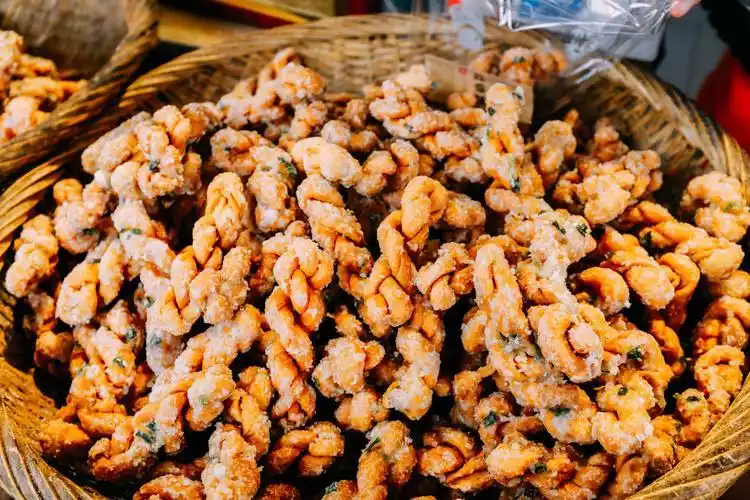
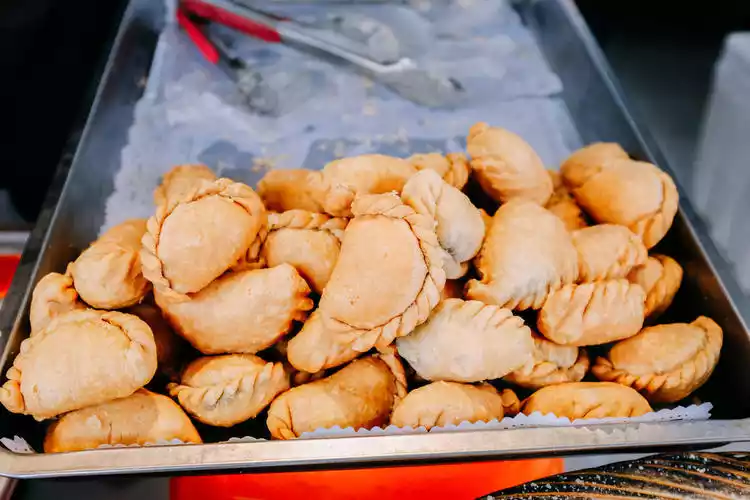
Tuanjie Fruit Shop
A local specialty fruit shop, pickled fruits, pickled mangoes, guava. I recommend everyone to buy pickled mangoes, otherwise I still can't get used to it.
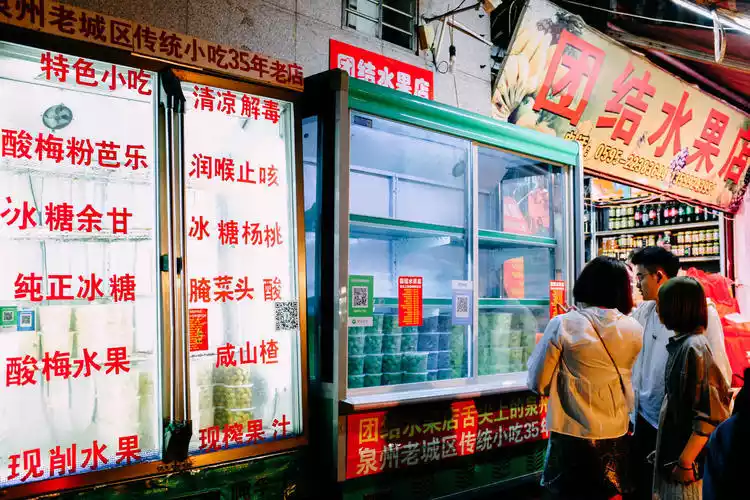
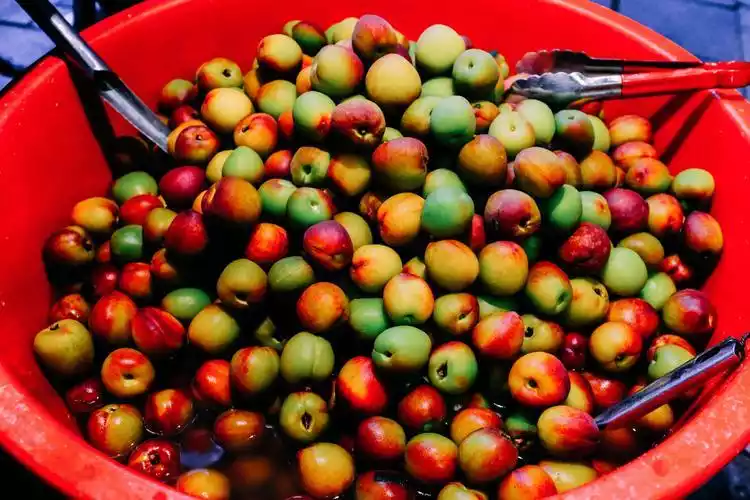
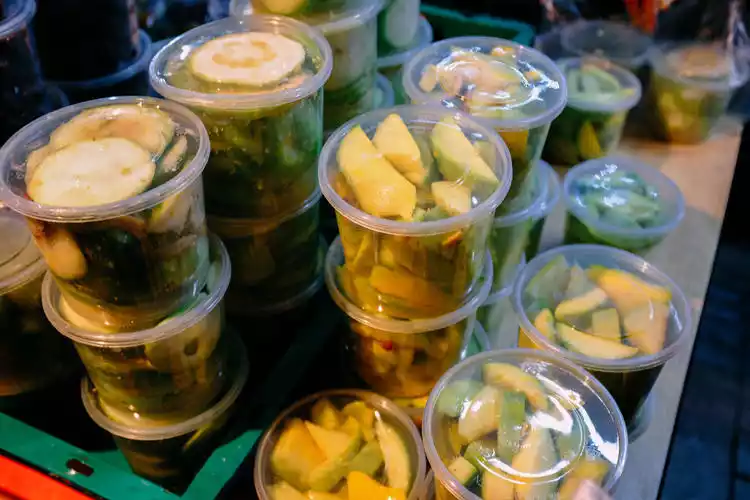
Youli Rooftop Cafe
This is a popular coffee shop because its rooftop offers a great photo spot for the East and West Towers. However, you need to pay to access the rooftop. There is a fence around the shop, and only after you pay will the staff open the fence to let you in.
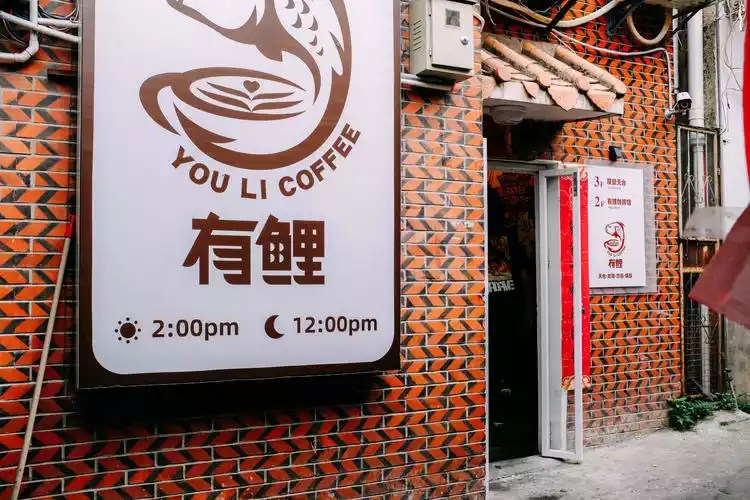
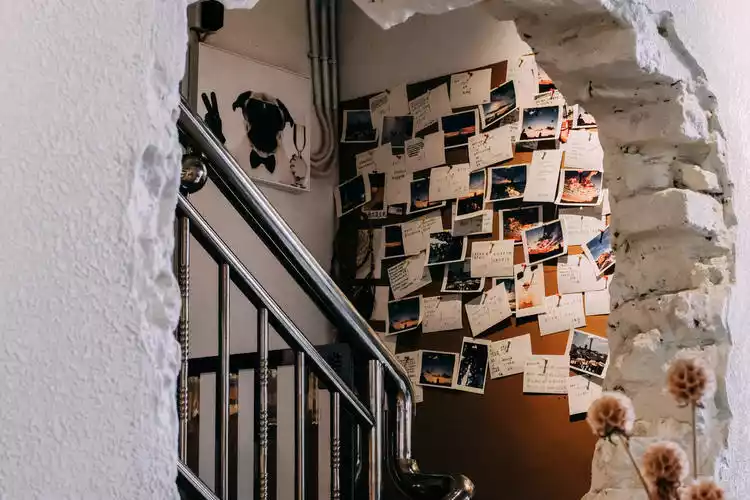
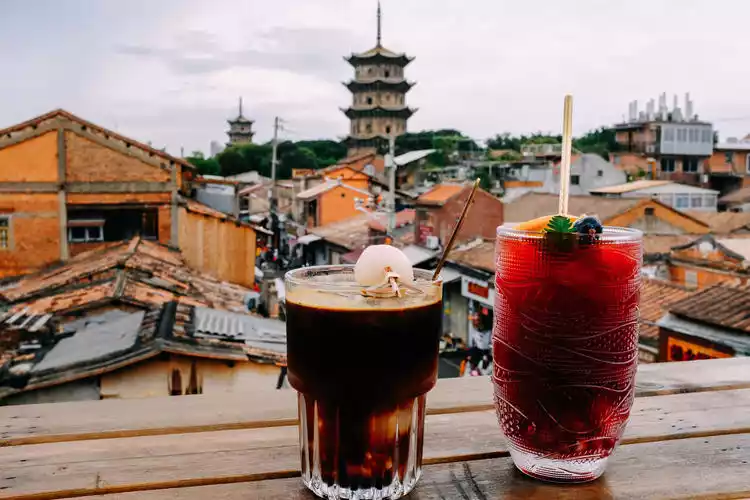
The lychee coffee is the signature of this restaurant.
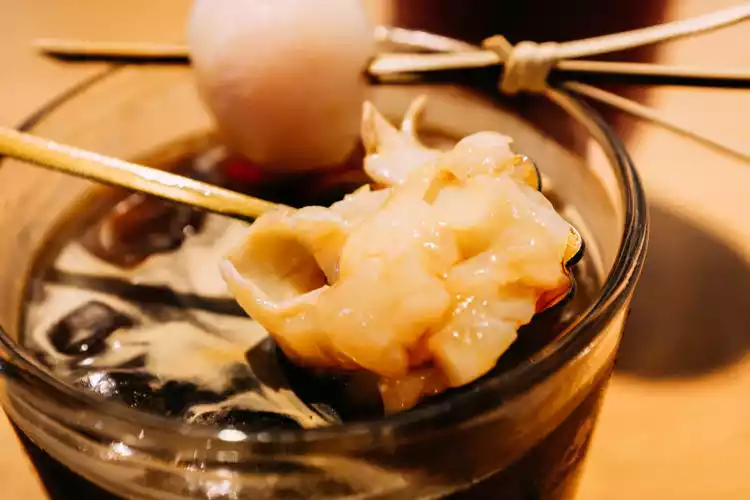
There were also kittens running around on the rooftop.

The postcards in the cafe are so cute. Every customer can ask the store for a free postcard. You can write on it and leave it in the store, or take it home.

Teapot
Hu Jian, Fujian (a pun!!!) I recommend it, it tastes good and is not expensive!
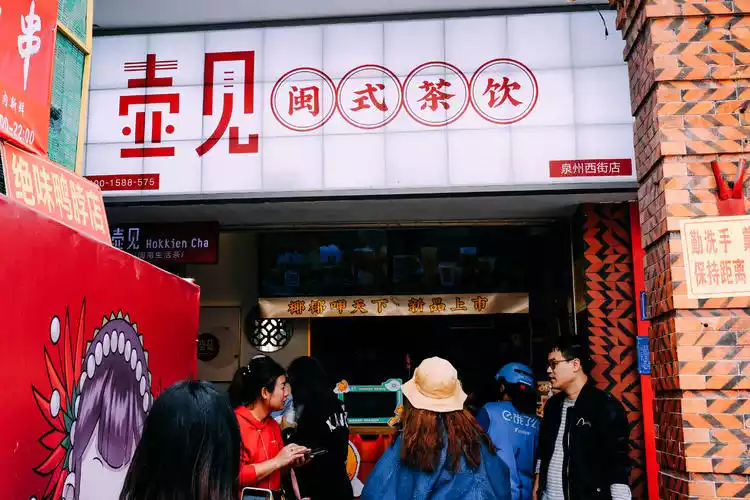
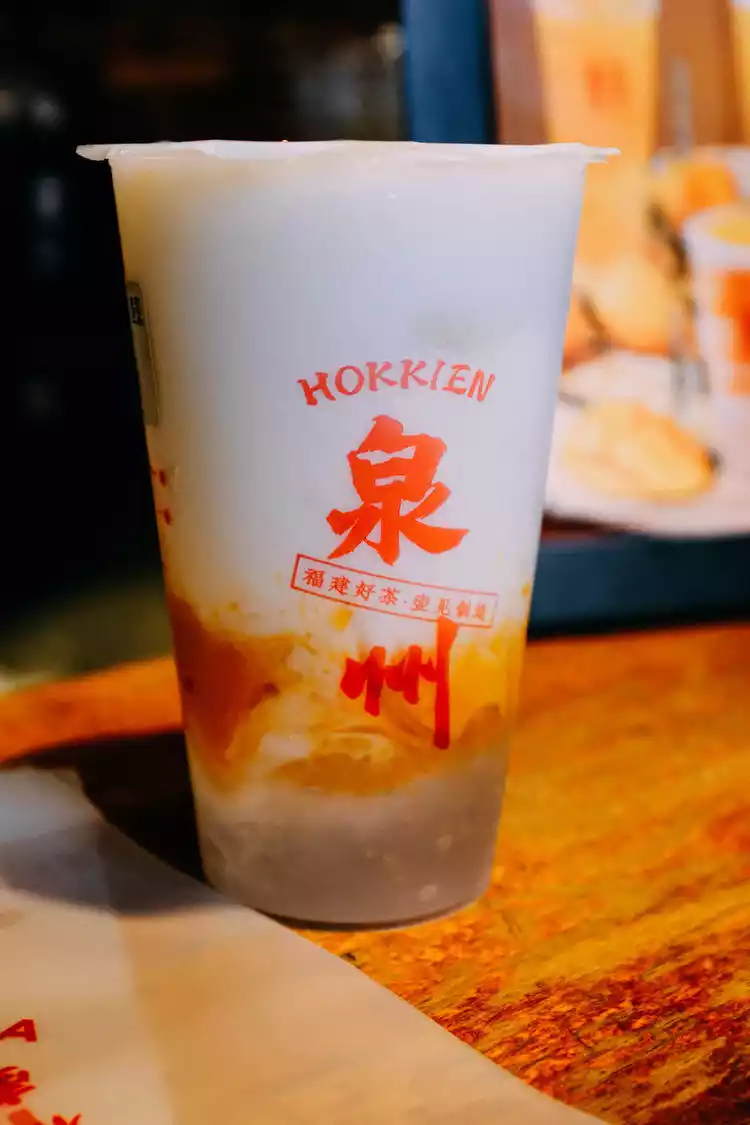
Berry Crazy Tea
This is also an Internet celebrity store on West Street. The whole store has three floors and is like a maze. The reason why it became an Internet celebrity is that its terrace can take pictures of the East and West Towers, but the tea drinks taste average.
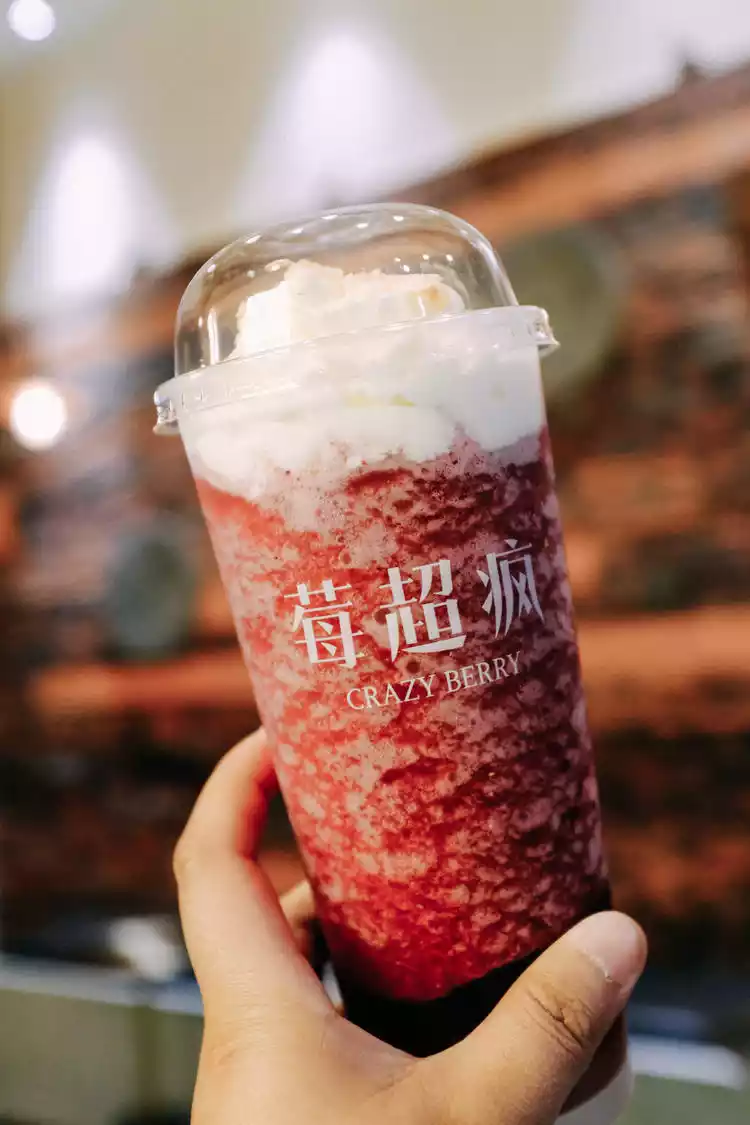
Zhongji Salt-Roasted Ginger Duck (Not Recommended!)
I had braised ginger duck in Yongning and decided to try the salt-roasted ginger duck in Quanzhou. I was completely disappointed! The ginger duck had no flavor, and the other dishes were so salty they made me want to eat them!
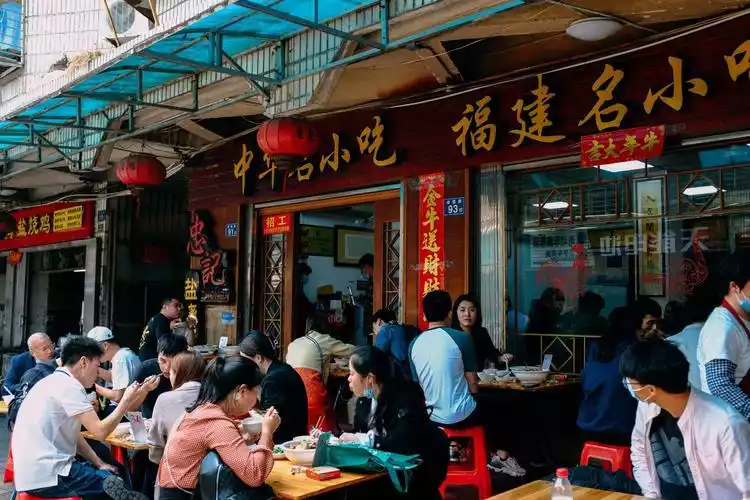
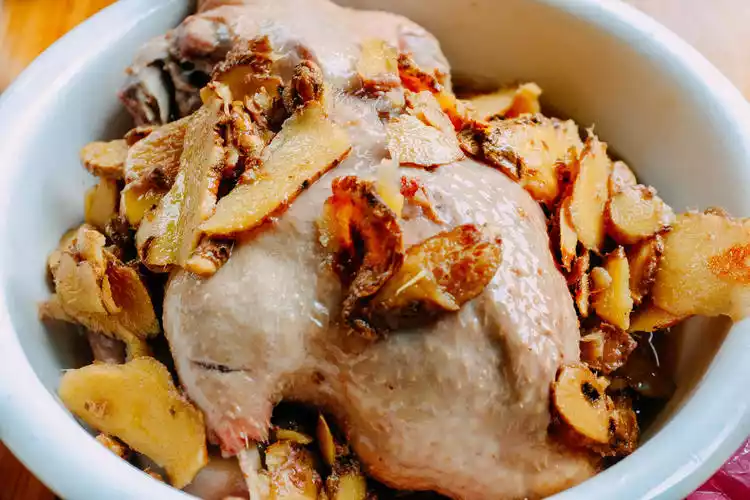
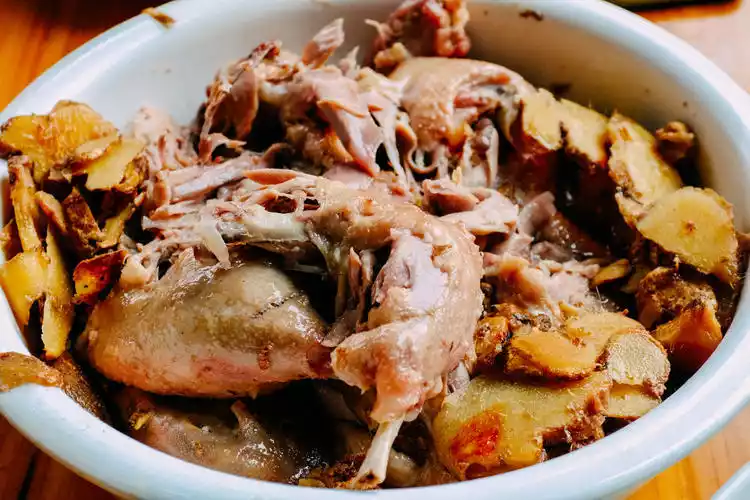
There is a lot of sand in the shells and they have a strong fishy smell.
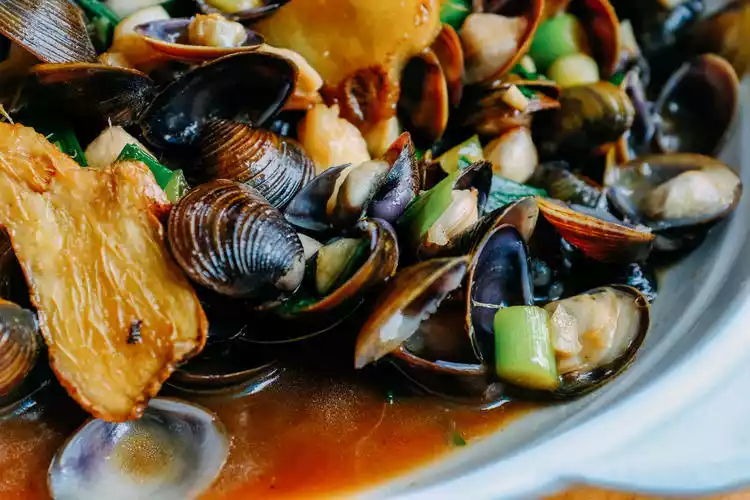
【Quanzhou Accommodation】
Park Li and Park Su
Highly recommended, located in Xiaogan Lane, West Street, very close to Cai Qing's former residence, with convenient transportation. It is not in the commercial downtown area of West Street, but close to the West Street vegetable market and snack street, full of fireworks.
Price: 230/night. I love the decoration of the B&B and the rooftop. The owner has a great aesthetic sense and you can see the owner's care in every detail of the room.
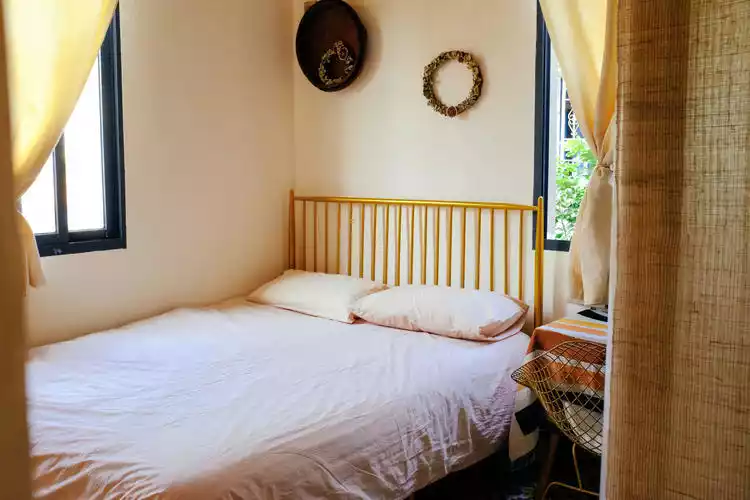

The rooftop environment is so good. Lying on the sofa or rocking chair and basking in the sun is so relaxing. There is a mulberry tree in the yard next door, and the boss picked a handful for us to taste. Climbing up to the third-floor terrace, we can see a little bit of the spires of the East and West Towers, the fireworks on the street, the leisurely pedestrians on the road, and listening to the car bells and hawking outside. I think that was the moment when I was most integrated into Quanzhou.
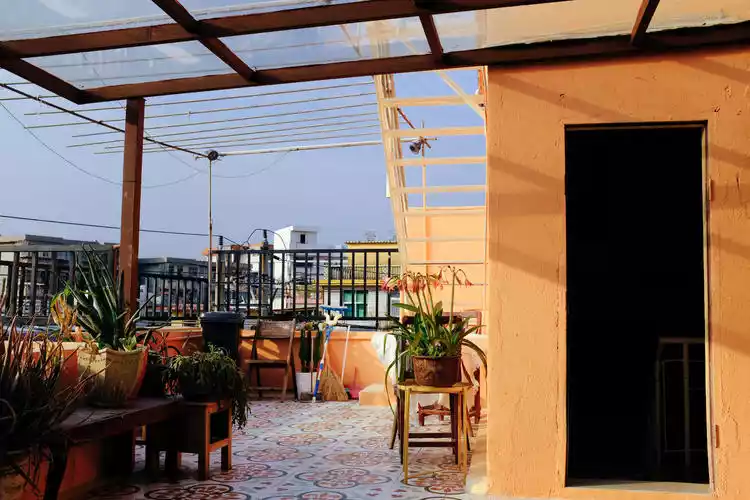
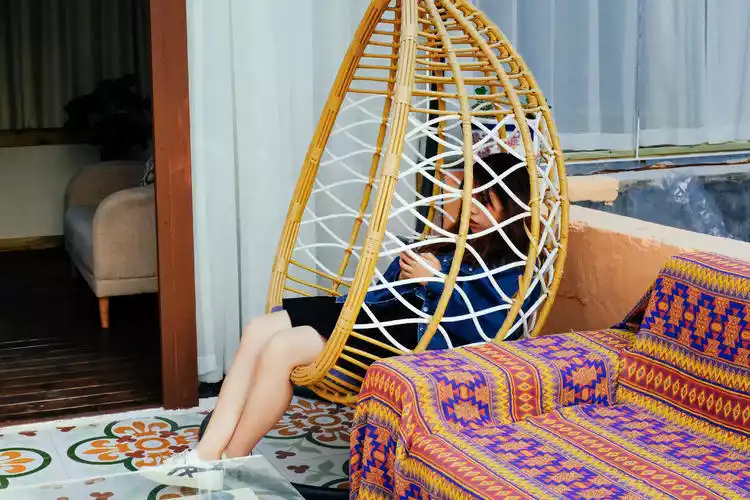
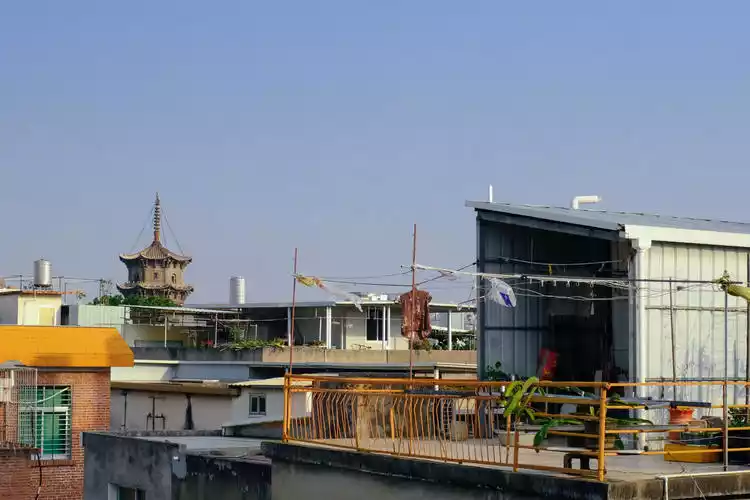
The public areas are also decorated with great care, displaying many old items collected by the owner, which are both literary and retro.
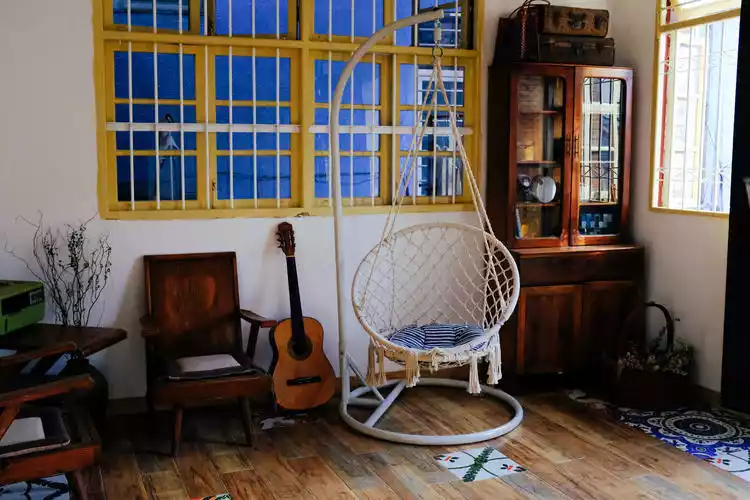
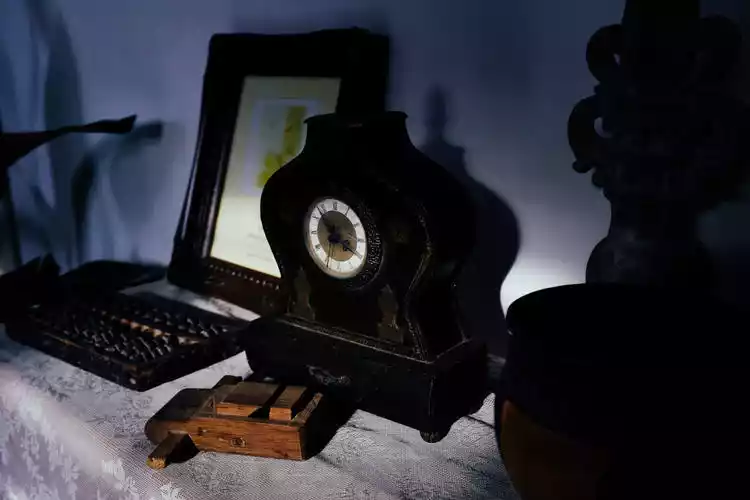
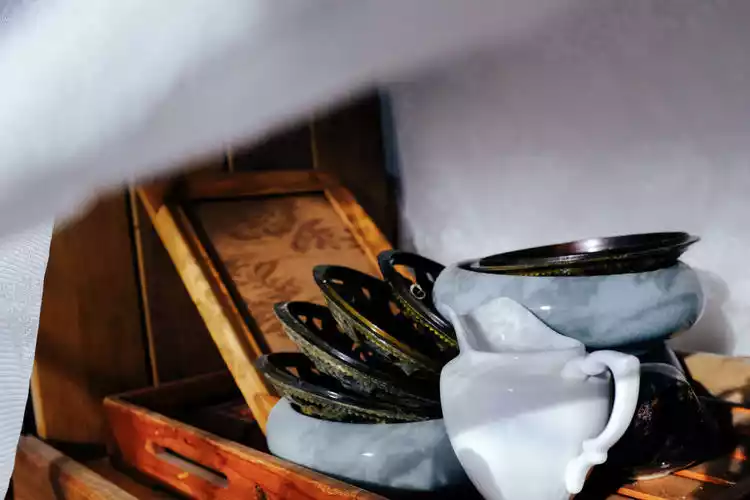
The story
The location is excellent!!! On the main commercial street of West Street, very close to Yuan Temple, you can see the East and West Pagodas right from the window!
Price: 230/night.
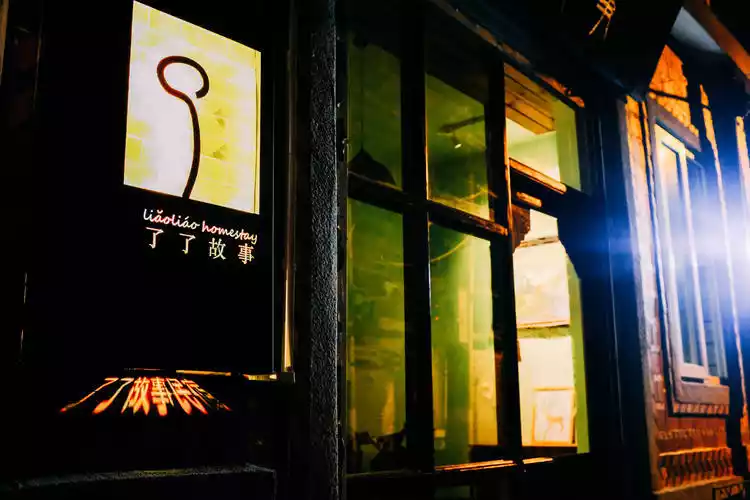
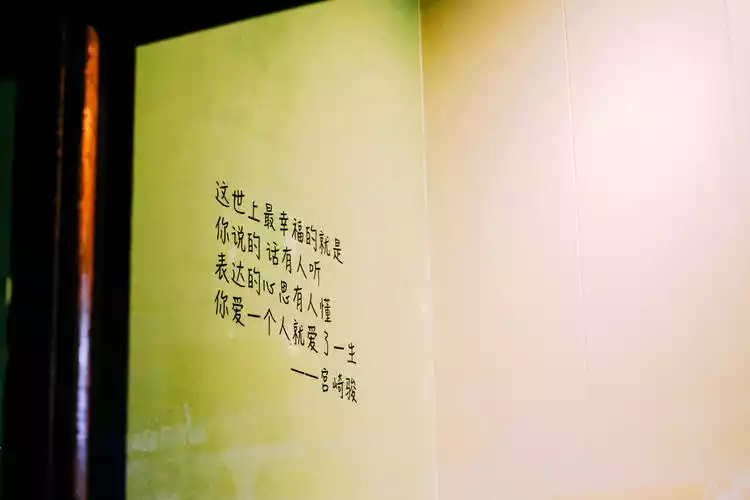
The homestay has a shared kitchen.
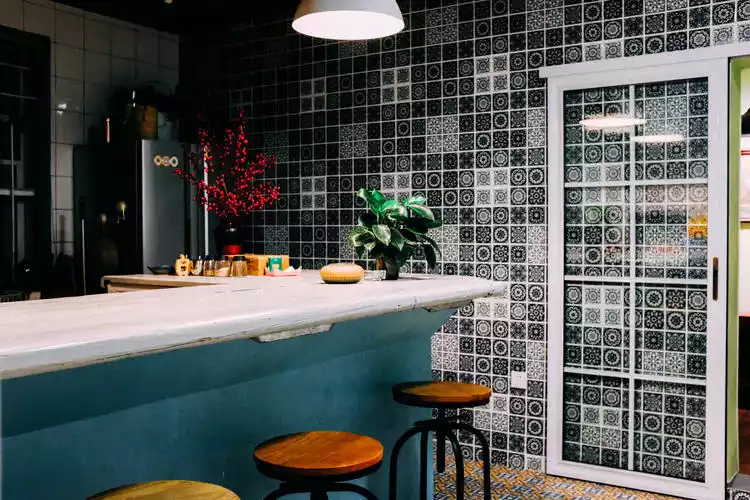
The room we originally booked had a window facing the street, but the owner was so considerate and upgraded me to a room where I could see the East and West Towers right from the window. It was truly stunning! They were so close!!
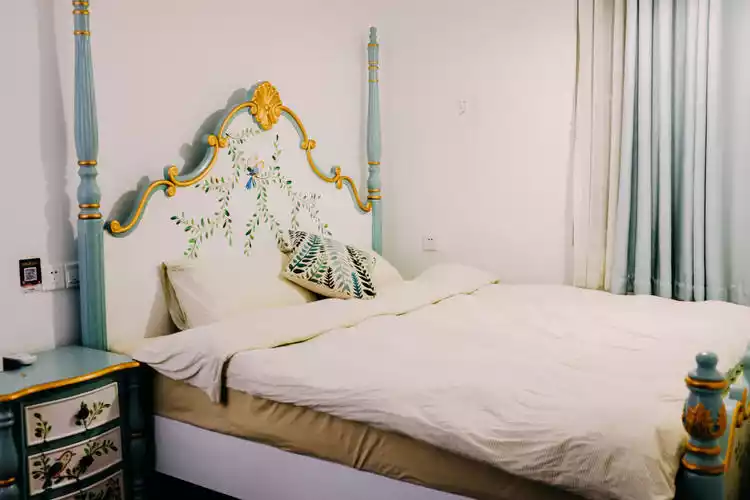
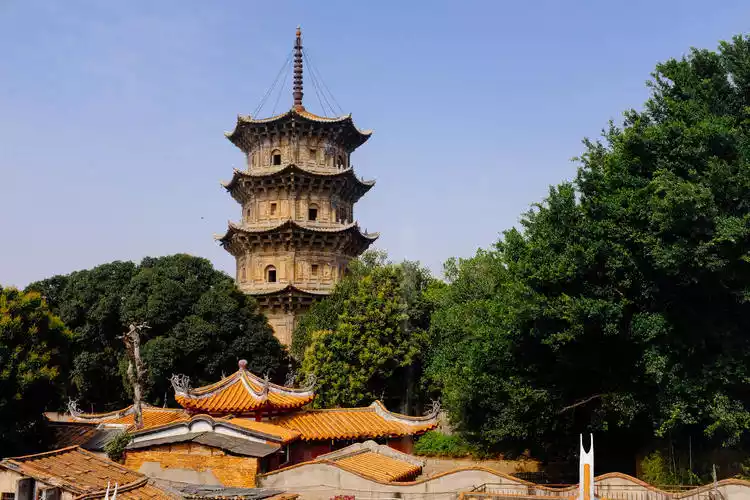
【Itinerary and Transportation Guide】
If you're traveling in Quanzhou, you can take one of these small blue cars. They don't have a fixed route. You can use Alipay to get the Quanzhou travel code, which costs 2 yuan per ride. Simply scan the code and ride. Simply wave and the car will stop. Before getting on, ask the driver if the destination is accessible.

Itinerary
DAY1: Nanjing → Jinjiang Airport → Yongning (Meilin Bay)
DAY 2: Yongning (Guanyin Mountain, Gold Coast, Hongta Bay), Licheng District (Puppet Show, West Street)
DAY3: Licheng (Kaiyuan Temple, Xiapu Village)
DAY4: Licheng (West Street, Chengtian Temple) → Jinjiang Airport → Nanjing

Conclusion
The survival of an ancient city depends not only on its architecture but also on the people who live there. Quanzhou still has the hustle and bustle of life overhead. The mountains and rivers are vast, and the hustle and bustle of life is a daily good thing.





